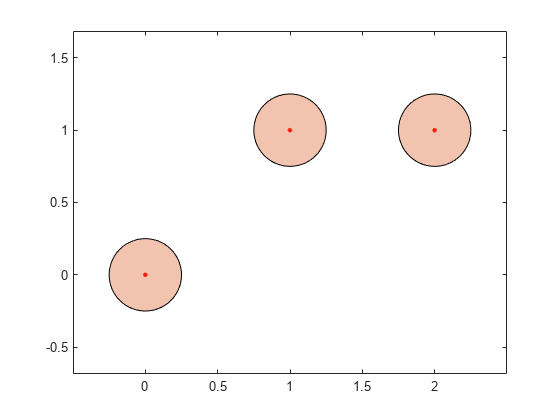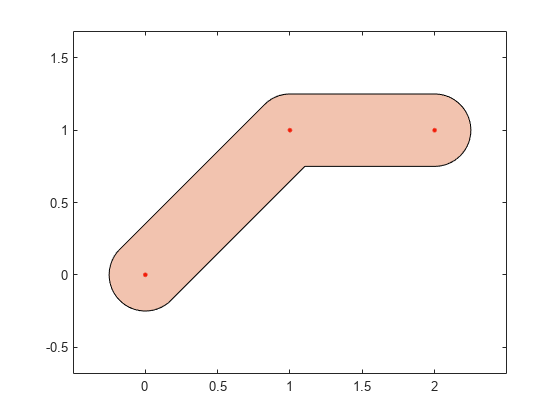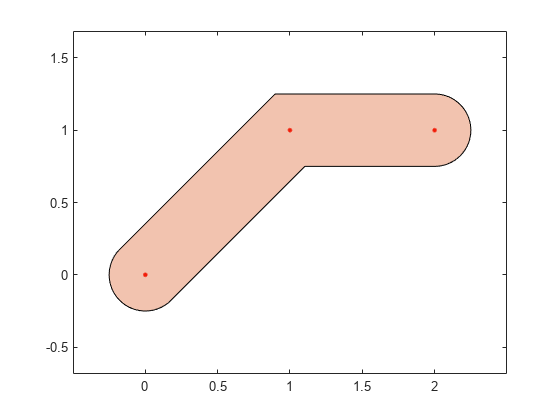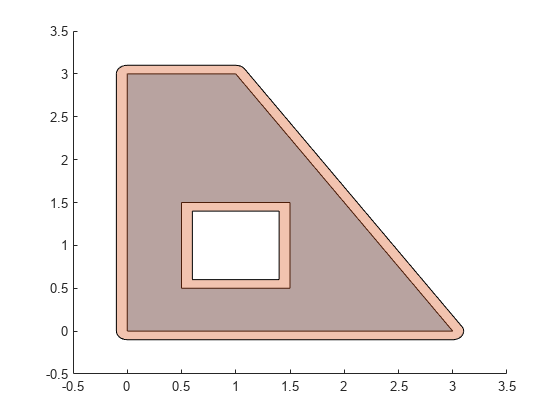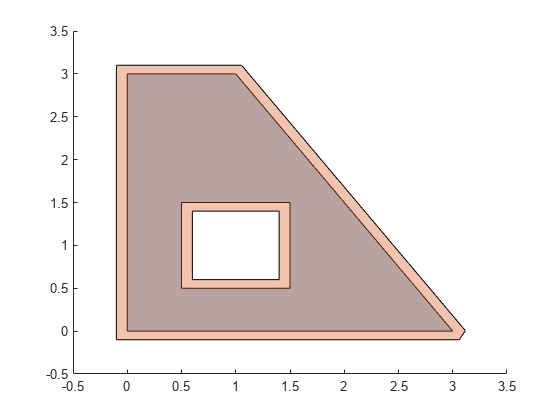polybuffer
Create buffer around points, lines, or polyshape
objects
Syntax
Description
polyout = polybuffer(
returns a P,'points',d)polyshape object with boundaries that buffer the 2-D points in
P by a distance d. The
polybuffer function computes the buffer by taking the
union of circles of radius d centered at each point in
P. The first column of the matrix P
contains the x-coordinates of the points to buffer and the
second column contains the corresponding
y-coordinates.
Once you create the polyshape object
polyout, you can analyze its properties or perform
additional computations using polyshape functions. For
example, you can access the vertices that define the buffered shape with the
property polyout.Vertices, and you can plot the shape using
the command plot(polyout).
polyout = polybuffer(
specifies a miter limit when the joint type is specified as
P,'lines',d,'JointType','miter','MiterLimit',lim)'miter'. The miter limit is the maximum allowable ratio
between the distance a joint vertex is moved and the buffer distance
d. The limit lim must be greater than
or equal to 2.
polyout = polybuffer(
returns a polyin,d)polyshape object with boundaries that buffer the
input polyshape object polyin by a
distance d. For positive values of d,
solid region boundaries of polyin expand by
d units, and hole boundaries shrink by
d units. Negative values of d shrink
solid boundaries and expand hole boundaries.
Examples
Input Arguments
Extended Capabilities
Version History
Introduced in R2017b
